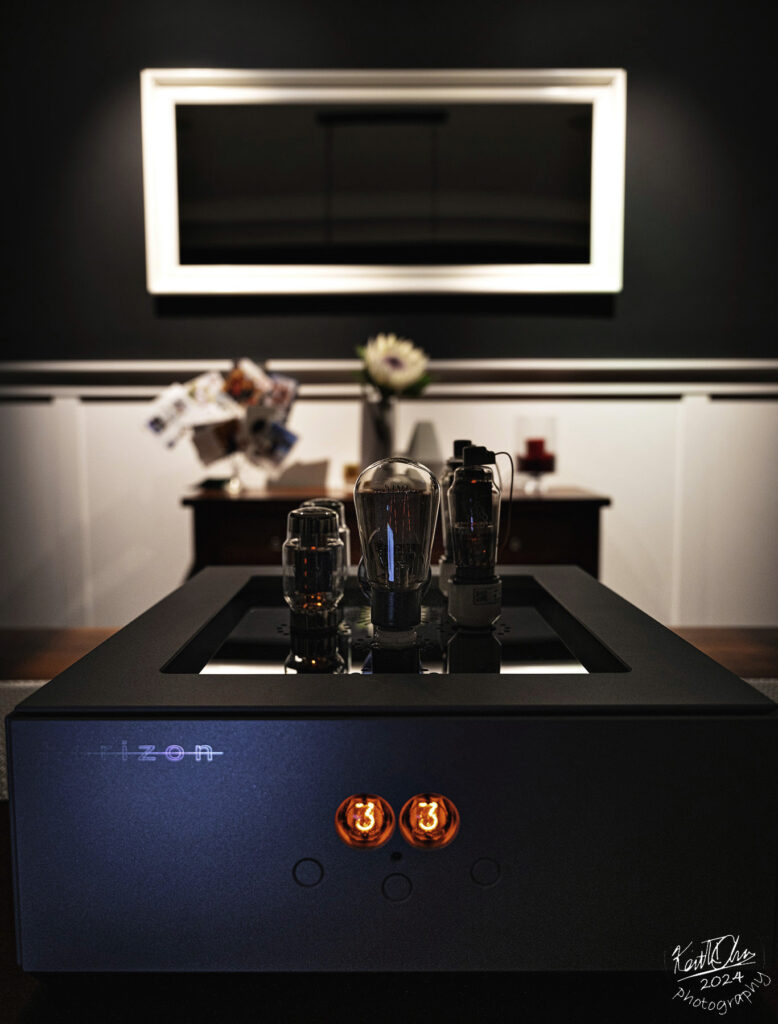
I hope no one at work reads this… I’ve been barely able to get through the last several days of work. My daytime sleepy stupor resulted from all the very late night listening and my inability to walk away from that one more song since the Horizon arrived. To confess, I even woke up early this morning to listen more and ended up being late for work. Hard to recall the last time I was so enraptured with a piece of new audio gear…
Flash back to the 2000s when I first heard the name Lampizator on Audioasylum forums. Some guy named Lukasz was hand-building DACs and gaining a passionate following, and from the sidelines over the next decade I saw Lampizator turn from a small boutique to become a recognized giant. My own audio journey went the direction of California Audio Labs, Resolution Audio and Vinnie Rossi, and fast forward to 2022 the upgrade path serendipitously led me back to my first Lampizator purchase: an Atlantic TRP 2 with Engine 11 upgrade. It was love at first listen, and within a 15 month period I climbed the Lampi ladder from the TRP2 to a Golden Atlantic TRP3, a Pacific 2, and then now the Horizon.
Insanity? Guilty. But a happy lunatic, and compelled to share my comparison of the Horizon with the Pacific 2 and the GA TRP3. After all, the Pacific was the flagship DHT DAC prior to the Horizon’s launch, and was recently upgraded with the latest Engine 11P circuit. During my transition period I was also loaned the Totaldac Unity by my local friend Rob which will also be included as another comparison point.
Why ‘Horizon’?
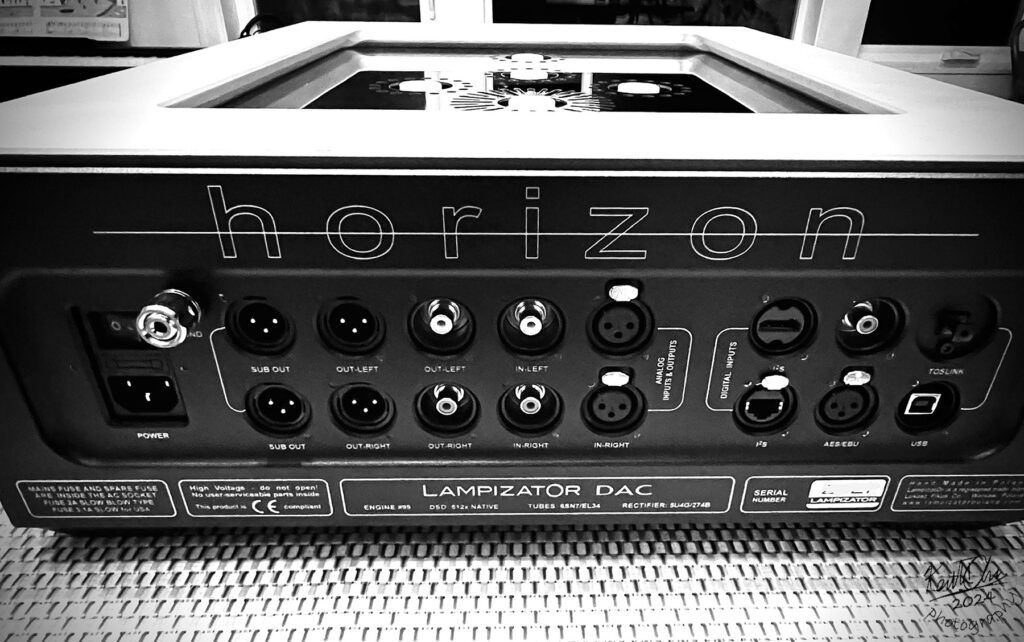
Prior to my deep interest in the Horizon, this latest flagship DAC seemed like just another Lampizator model — new top-tier, supposedly better, and highest price. But it actually represents a dramatic and very unique design that deviates from Lampizator’s history — as Lukasz explains, it was the perfect storm of a limited supply of a new DAC chip, a new vacuum tube configuration using a quad of pentodes for power regulation, anode loading and cathode buffering in a balanced circuit, and a fanatical challenge of his engineering team to reiterate design after design to achieve the best sound, followed by his team spending hundreds of hours doing blind listening and picking each individual component/brand/product from the caps to solder… all only made possible due to the year of Covid isolation. In other words, while prior products like the Pacific was an attempt to make the best evolution of their DHT DAC, the Horizon was the absolute no holds barred pursuit of perfection only achievable as a labor of love — a true statement product in every sense of what they can do. If the Pacific represents the power and dynamic of the greatest ocean, then the essence of the Horizon is the dream of the possible and ultimate destination — “the limit of a person’s mental perception, experience, or interest ” as the name is defined by Oxford dictionary. And if I understand correctly, only a limited number of Horizons will be produced due to parts availability.
The Horizon’s design is fully balanced. While the prior DACs (Baltic, Atlantic, Big 7, GoldenGate, Pacific) that can be ordered in either SE or balanced configurations and with optional volume control, the Horizon only comes in one configuration — they all have volume control, SE and balanced inputs and outputs. Color preferences for the body panels and top plate are the only customizable choices (mine is Sahara Silver body with a chrome silver top). The external design also differs from their prior DACs — unlike the classic products that have a boxy, industrial sheet-metal appearance with exposed fasteners (e.g. socket head screws on the Pacific), the Horizon has a modern yet artistically sculpted body with suspended “floating” side panels, and a recessed accent top; under certain dimmed lighting conditions the tubes almost appear to rise above a water surface. No screws are visible except on the bottom panel. The core of the very heavy and rigid body is a solid CNC frame where the circuit is directly mounted in order to maximize support stiffness and vibration control, and the OLED display used in other DACs is instead replaced with a Nixie-tube display not only for the cool-factor, but also to minimize electrical noise.
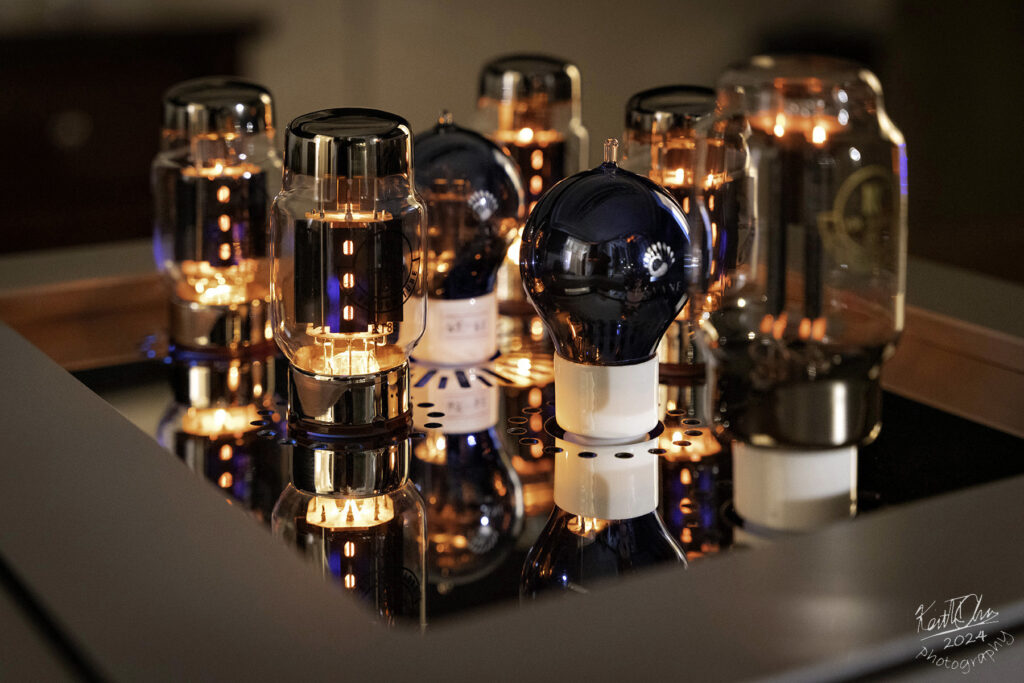
My initial reaction upon seeing the Horizon was a major Wow! While I remember first seeing the Pacific 2 and immediately recognizing its size and heft, to my eyes it did not have a particularly beautiful or sophisticated appearance. The Horizon, on the other hand, looks like jewelry — I especially love the flow of its body lines and the mirror-like top that amplifies the tube glow. Spousal approval was high (aka she even made a compliment). It is the same size as the Pacific but slightly heavier (~70 lbs), and is a LOT stiffer; this chassis means business and feels like a piece of granite. Aesthetically it will fit well as a centerpiece of an audio system.
The test system consists of the Lampizator Horizon using both stock (KR Audio 5U4G and KT88, Psvane 6SN7 blue globes) and NOS tubes (Valvo G2504, Telefunken C3G, SFR P17C all with TP adapters) compared against a balanced Pacific 2 w/ VC (with G2504, C3G, PT14 with TP adapters), Golden Atlantic TRP3 w/ VC (with Siemens F2a, Western Electric 422A), and Totaldac Unity. Roon and locally-stored files were played from a Lucas Domanksy Music Server (LDMS) Minimax. The DACs directly drove a Riviera AIC10 Bal amplifier and a pair of ZMF Caldera planar headphones. A Shunyata 6000S/V2 supplied power with a mix of QSA-Lanedri, Sablon and Shunyata cables. Digital and analog interconnects included Shunyata Omega and Alpha V2. Incoming ethernet signal was processed by an Innuos Phoenixnet and Network Acoustics Muon filter. The Horizon also used a Synergistic Research Purple fuse and sat on Critical Mass Systems Center Stage 2 footers.
The Sound
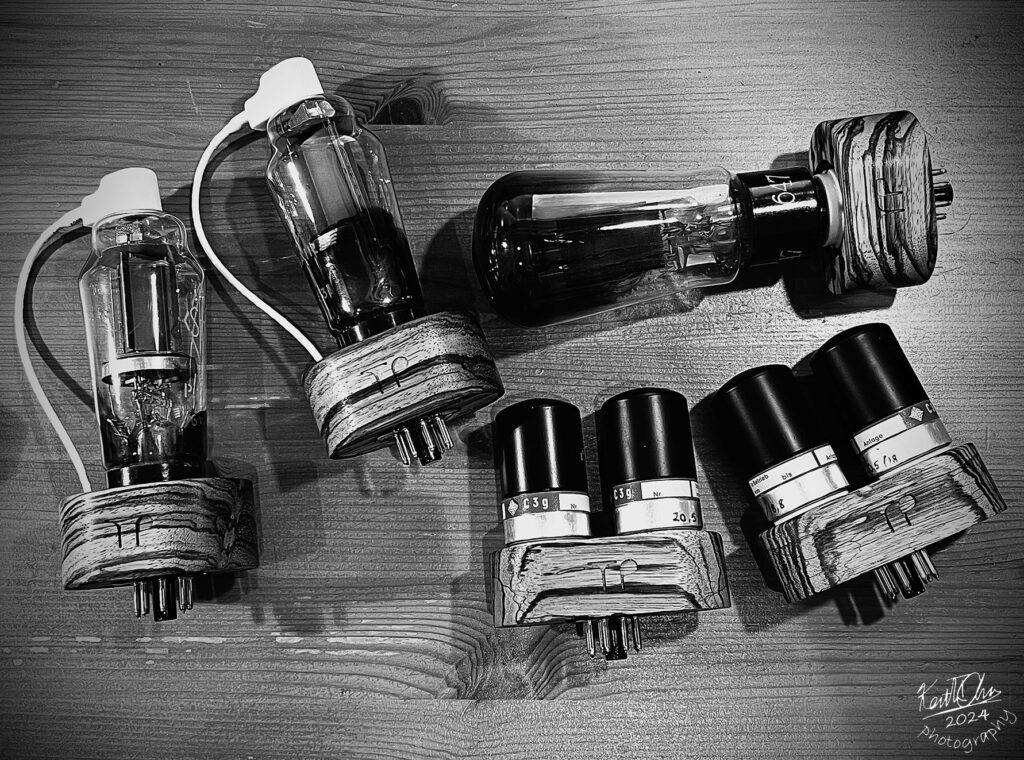
Numerous well done reviews of the Horizon exist at the time of this writing (hats off to Greg Weaver’s article as an exemplary one). For my reflection I will limit the scope to what I feel are potentially contenders for those considering upgrading to, or instead of, a Horizon — in this case, two other Lampizator siblings, and the Totaldac’s latest mid-tier offering…. if you immediately struggle with a comparison of DACs of such varying costs… that’s my liberty as the writer. Furthermore, it was only less than a year ago when I thought the Lampizator Atlantic TRP was near the endgame of what I needed, as it checked off almost all sonic boxes and consistently created beautiful sound for what I felt was an expensive but acceptable price point, and I remember asking why I would ever climb the upgrade ladder. An important perspective to highlight — the Atlantic TRP with optimized NOS tubes is, to me, highly engaging, toe-tapping, with beautiful harmonics presented in a sonic picture that felt complete. Without a better way to describe it, it was FUN, and I had memories of falling in love with specific albums since they were portrayed so well.
To set the stage, the Pacific 2 with its pricey set of NOS tubes replaced the GA TRP3 as my reference DAC. At roughly 3x the cost of the TRP, it turned multiple technical knobs one click higher which was quite an achievement — there were more microdetails (aka “plankton”), more nuance, and actually slightly deeper bass. There was a timbral refinement which clearly set it as a higher benchmark, but for my system, it also came at a cost: it presented music in a very matter-of-fact voice, which some may call ‘neutral’, but to me it lacked a certain boogie-factor that was so apparent whenever I went back to the TRP. I heard more with the Pacific, but with the TRP I played air guitar and sang along with a smile.
During the Horizon’s production, I had the Totaldac Unity for 3 weeks to answer the question, What if I left tubes behind? Honestly, I was somewhat blown away — the Totaldac sounded beautiful and fun, rivaled some of the Pacific’s technicalities, and had the added convenience of being okay powered on 24/7 without any guilt of tube wear. It portrayed music in a way which I would get lost in enjoyment and stop worrying about how maybe it wasn’t the last word in details, bass definition, tonality, or frequency extension. There were at least several times when I felt it (or its sibling the Triunity) would be a great DAC option if I had to build a new system and was willing to be tube-less, especially since it cost less than my balanced Pacific (not to say which I would ultimately pick, as all 3 have their merits).
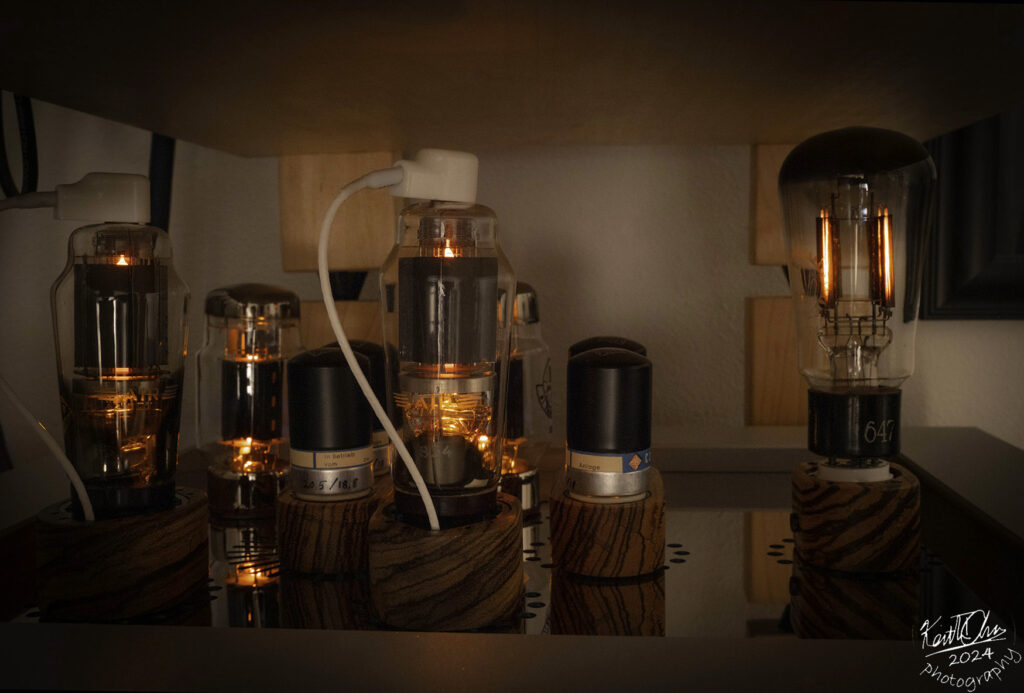
Then the Horizon arrived. I’ll admit — I was prepared for the laws of diminishing returns. After all, for me the delta of going from GA TRP3 to the Pacific 2 seemed uncertain compared to its price difference, so I was fearing if this is going to live up to some undefined better…
I was astounded. Utterly gobsmacked. If you don’t want to read further, I’ll just summarize for you: the Horizon is significantly better and beyond what the Pacific 2 did for me, and that is from the first song in its not-yet-burned-in state using stock tubes. With NOS tubes, the Horizon is just out of this world. It mops the floor with the Pacific or Unity — which is a shocking statement since I had previously thought they were outstanding, and didn’t know what could be better. Lampizator has a graph on their website giving the Pacific 2 a score of 85 to the Horizon’s 100; in my opinion this is probably a good 30-40% better to my ears. How could I substantiate this verbal gushing? Let’s break it down.
The immediate thing I noticed was how much more definition was across the entire tapestry of music. Until now, the idea of ‘detail’ was somewhat one-dimensional; for example, I referred to the Pacific 2 having ‘more plankton’ than the GA TRP3 which meant when listening to Norah Jones I could hear more microvibrato in her voice, more smack of lips and oral shaping of words, more leading edge snap in the strum of the double bass — these changes were usually in the foreground or main melody, while the background instruments were more obscured and had less character (“blobs of sound”). However, the Horizon brings next level definition but in two dimensions; not only are the micro-nuances of the shish of a piano’s pedal presses, record mastering’s low-level noise, or Norah’s soft inhalations and accent in shaping her lyrics more noticeable, but the background accompaniment is much more present, and with as much twang and instrument body and speed as the melody regardless of how complex the passage is. The different parts of Norah’s “Painter Song” were clearly separated before with the Pacific 2, but now I can really feel the beauty in each performer’s playing, such as the nostalgic finish of the accordion at 2:33, or the violin and piano in Jewel’s “Foolish Games.” Song after song I had the proverbial I never realize that was there! Seemingly the entirety of the composition is now revealed to provide more insight on the artists’ intentions of which I had previously not appreciated.
Related to the tremendous details/microdetails served by the Horizon, there also appears to be significant improvements in timbre; this was immediately felt in piano chords — treble piano notes have just that right amount of body, crispness of tone and strike, while bass notes have that subtle vibration of a long piano string and interaction with the piano’s wood. It sounds so much more right — this is a cliché which normally I despise in reviews, but appropriately captures what I lack the words to explain, but keep wondering if perhaps higher order harmonics are more intact in the setting of a very low noise floor. An example is the timpani roll at 7:03 near the end of the fourth movement of Berlioz’ Symphonie Fantastique (Cleveland / P.Boulez), the mallet strikes and bounce of the drum skin is so standout; previously this was fast and clear and had impact but still sounded like a recording, but now it sounds the way it does in real life sitting in the front of the orchestra. Vocals, such as Eva Cassidy’s “What A Wonderful World” (Live at Blues Alley 1997), are incredibly lifelike with laryngeal texture, waxing and waning of minute vibrato, or a sense of strain bordering on breaking when she is holding a note. The last decile of vocal complexity is unlocked in “Angel” by Sarah McLachlan (Mirrorball 1999), a track played innumerable times here over the past 20 years, and the improvements transformed my appreciation for her talent which I did not fully grasp before the Horizon; this timbral completeness is appreciated from sub-bass through the upper echelon of treble. The realism factor is noticeably higher than any other DAC I have experienced; in comparison the Pacific 2, GA TRP3 and Unity’s playback sounds incomplete.
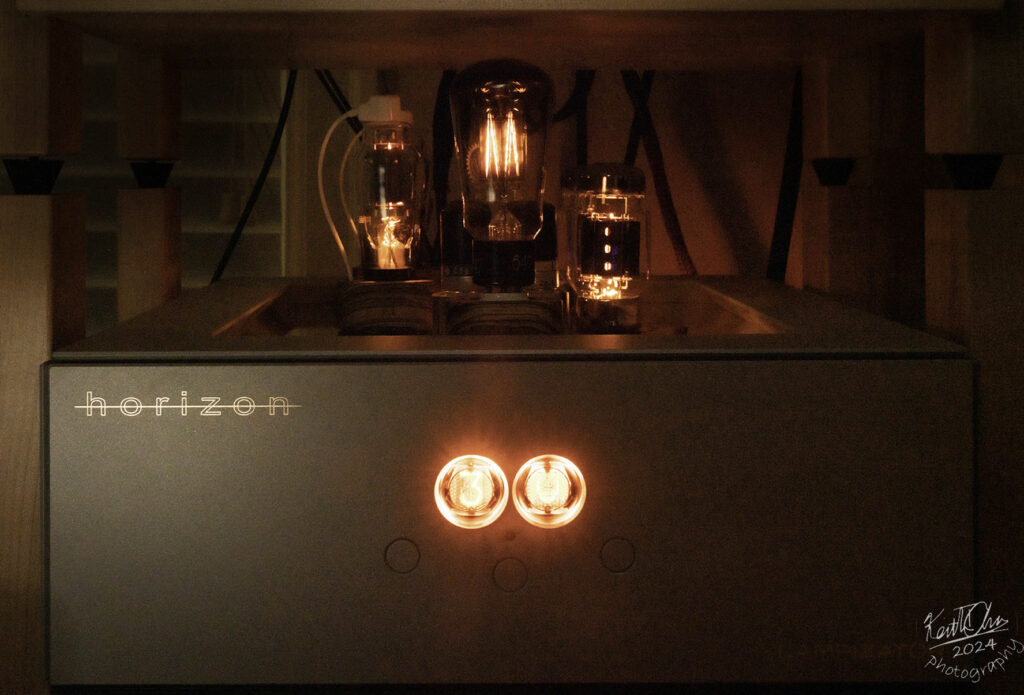
Another observation is the Horizon’s addictive sense of ambiance and ‘liveliness’ — my term for the sense of how each instrument interacts with the venue and the recording microphones. Drums, triangles, bells, pianos, amplified guitars all have a more noticeable but appropriate reverb, ring, or echo that differ depending on the recording (but consistent across different instruments within one song), helping to create the illusion of being able to see the performance that is less apparent in other DACs. The soundstage is quite wide and spatial separation is more noticeable. In the past, I have occasionally criticized the Pacific 2’s vocals as not being forward enough, or not being able to draw me into the music; with the Horizon you are immersed, as if you are sitting on the stage and the artists individually adjust their distance from you depending on which part of the music is being highlighted. Macrodynamic swings are huge, larger than my prior DACs when used directly with the Riviera amp, perhaps due to an improved tube stage and impedance matching. There is also a greater energy in the percussion and the attack of notes leading to an overall exciting character, but at other times relaxed, depending on the composition.
Competing DACs can excel in some of these technical attributes, but sometimes at the cost of sounding clinical, boring or fatiguing. Horizon achieves the most, dare I say, perfect blend of strengths such that the sonic tapestry is balanced and no one characteristic is out of place. If I nitpicked at each audiophile technicality, yes it’s there in spades and is of top quality…. but the crux is the strong emotional conveyance which overlies the amazing amount of details, soundstage, and tone. This emotional expressiveness often is lacking or absent with lesser DACs. My best description of the Horizon sound signature is “you are deeply in the soul of the music”, a synergy from the magical sum of the parts above. The beginning of “Winter” by Tori Amos (Little Earthquakes, 2015 remaster) is haunting yet draws me in. The howl during the opening sequence of Guns N’ Roses “Welcome To The Jungle” (Appetite For Destruction, Qobuz 192/24) followed by the cascade of guitars felt like getting a face full of afterburner exhaust from a fighter jet. I could smell the Fillmore at Sara Bareilles’ live recording of “City” with the complexity of her voice, the detailed threads of her piano and the band’s guitar and shakers amidst the crowd’s singing along and cheering. Keith Jarrett’s creative outpouring in “The Koln Concert Part I,” with his toe tapping on the wooden stage, his inhalations, chanting and whooping, the thick visceral piano, becomes a transformative performance of which I have never heard in my home.
Is This The Top?
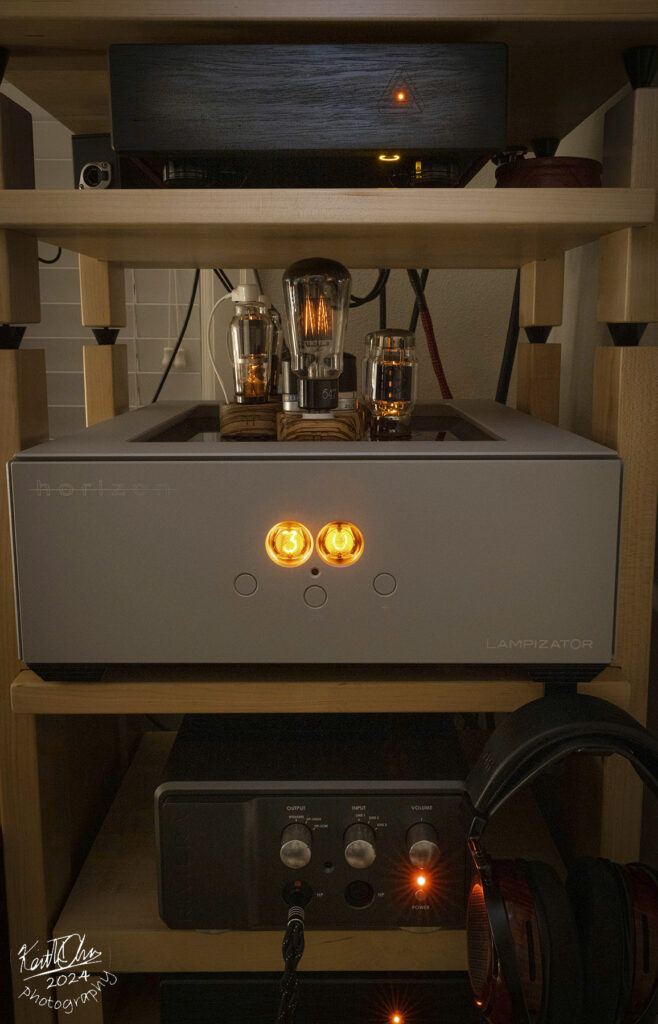
Mr Weaver, in his EnjoytheMusic review of the Horizon, said this flagship Lampizator “is simply the finest example of a stand-alone DAC engine I’ve yet experienced.” I agree wholeheartedly! Its standing at the summit of the Lampizator mountain simply needs to be experienced, and despite its price, I have thought more than a few times that the Horizon is perhaps a solid bargain among the DAC gods.
Dammit I’m now late to church. The wife is asking me why I’m listening to music all the time, even when we’re trying to get ready for things. Now you know why… and it’s wonderful.
I admire the beauty created when science intersects with art/faith. Or so I believe at least when I’m at work.
And that is why I love high-end audio. There is such a relentless pursuit for the ultimate quality and expression of beauty, and sometimes it is through real research and engineering, but often it is through just the art of trial and subjective listening. The musical joys we get are so difficult to achieve and describe, and yet so right when it’s there.
I live in the Pacific Northwest, trying to make sense of the world as a working dad, but also finding solace in music, community, and great food.
Current setup:
Lucas Domanksy Music Server / Lampizator Horizon / Network Acoustics Tempus + Muon
Kuzma Stabi R / Hana Umami Red / Sutherland Little Loco II
Riviera AIC10 BAL / ZMF Caldera
Shunyata power system, QSA-Lanedri / Shunyata / Sablon Audio cabling